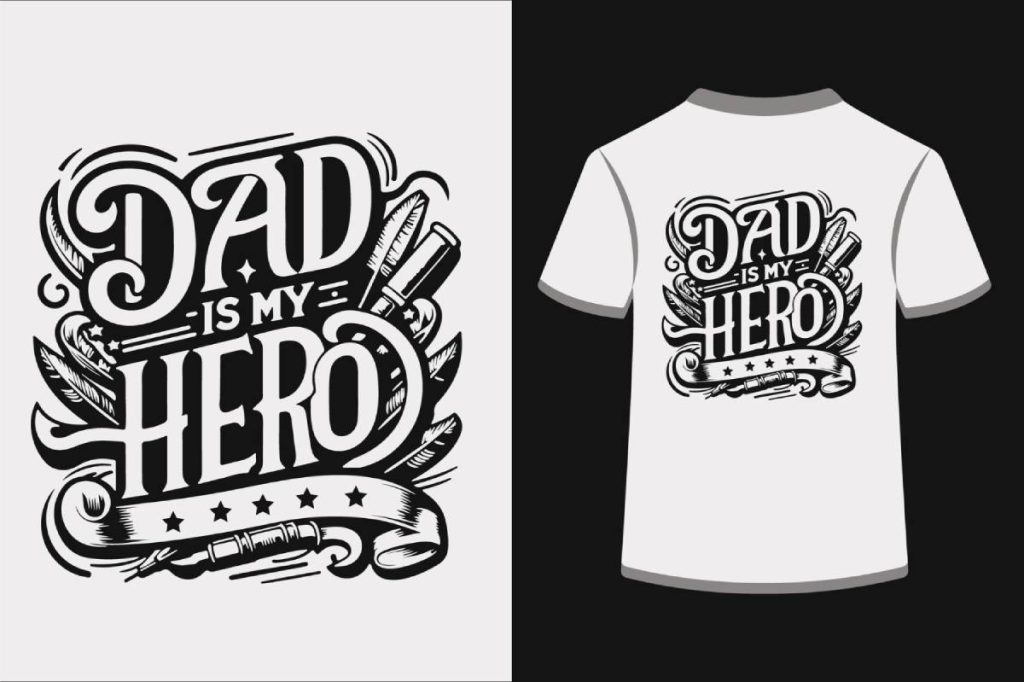In the evolving landscape of the print industry, **UV DTF Gangheet** has emerged as a pioneering technique that is reshaping how businesses approach custom printing solutions. This innovative print technology leverages the speed of Direct to Film (DTF) methods while utilizing ultraviolet (UV) curing processes to produce high-quality prints with remarkable efficiency. As sustainability becomes a pressing concern in manufacturing, UV DTF Gangheet offers eco-friendly alternatives that help reduce waste and lower volatile organic compound emissions. In this article, we will explore the myriad features and advantages of UV DTF printing, illustrating its role in driving the future of sustainable printing practices. By understanding the unique benefits of UV DTF Gangheet, businesses can better position themselves in an increasingly competitive market.
The advancement of UV Direct to Film (DTF) printing technology marks a transformative shift in the printing sector, fostering fresh possibilities for customized output. This cutting-edge method harnesses ultraviolet (UV) light to cure inks printed onto films, resulting in stunning visuals that cater to a diverse array of materials. With the growing emphasis on sustainable practices, this technique not only meets the demand for high-quality prints but also integrates a more environmentally friendly approach. As industries increasingly look for innovative print solutions, the UV DTF method stands out for its efficiency and effectiveness in producing vibrant, durable prints that resonate with the principles of modern sustainable printing.
Understanding the Basics of UV DTF Printing
UV DTF printing combines the benefits of traditional Direct to Film (DTF) techniques with ultraviolet curing technology, facilitating a rapid and efficient print process. This method involves layering vibrant inks on a film that cures instantly upon exposure to UV light, resulting in immediate drying. The immediate curing action means prints are ready for handling and transferring almost right away, minimizing waiting time associated with conventional printing methods. With companies constantly seeking faster turnaround times, UV DTF’s quick nature addresses this demand effectively.
Additionally, UV DTF printing is renowned for its versatility across various substrates. Whether it’s textiles, hard surfaces, or unconventional materials, this technology adapts seamlessly, providing businesses with ample opportunities for customization. The ability to reproduce high-quality images with intricate details further amplifies its attractiveness. This characteristic is especially critical in markets where visual appeal can dictate purchasing decisions, making UV DTF an essential asset for print service providers aiming to meet client expectations.
The Growth of UV DTF Gangheet in Diverse Markets
The rise of UV DTF Gangheet is closely linked to emerging consumer demands across various sectors, including fashion, home decor, and packaging. Businesses are increasingly looking for innovative printing techniques that enable customization and personalization. With UV DTF printing technology, brands can offer unique designs, paving the way for short-run productions that cater to targeted audiences without sacrificing quality. The efficient use of resources, combined with swift production capabilities, empowers businesses to enter niche markets effectively.
As industries evolve, the need for sustainable solutions remains paramount. UV DTF Gangheet stands out with its eco-friendly inks that emit lower VOC levels, appealing to environmentally-conscious consumers. Companies are adopting UV DTF not only to improve their product offerings but also to align their practices with sustainability goals. Consequently, businesses leveraging this technology can enhance their corporate social responsibility (CSR) profiles, making them more attractive to a growing base of eco-aware customers.
Technological Advancements in UV DTF Printing
Recent advancements in UV DTF printing technology have significantly improved operational efficiencies and output quality. With the introduction of more refined eco-friendly ink formulations, operators can achieve superior results while maintaining a commitment to sustainability. These innovations result in prints that not only showcase vibrant colors but also adhere flawlessly to an extensive array of substrates, expanding the potential applications of UV DTF Gangheet. This adaptability positions UV DTF printing as a go-to solution in today’s competitive print industry.
Furthermore, the emergence of user-friendly printing machines enhances the accessibility of UV DTF technology. Manufacturers are focusing on simplifying the operation and maintenance of printing equipment, which diminishes the technical barriers for operators. As companies invest in training and upskilling their staff, they can maximize the benefits of these advanced technologies. Improved usability fosters an efficient workflow, enabling print service providers to achieve high-quality outputs with less strain on resources.
Market Trends Influencing UV DTF Adoption
The UV DTF printing market is experiencing transformative growth, driven by key trends such as the rise of customization and the focus on sustainability. As businesses seek to differentiate their offerings, UV DTF allows for creative freedom and personalization, enabling shorter production runs without compromising quality. This flexibility plays a significant role in responding to consumer preferences that increasingly favor unique and customizable products. In a landscape where instant gratification is paramount, UV DTF benefits stand out.
Moreover, as companies pivot towards greener printing options, UV DTF rigidity becomes evident. The technology facilitates efficient material usage and lowers the amount of waste produced during the printing process. Additionally, the quick-drying nature of UV DTF printing means less energy consumption in drying processes compared to traditional methods. As the industry aligns itself with eco-friendly initiatives, UV DTF printing provides a fundamental pathway toward a more sustainable future in printing technology.
Challenges Facing UV DTF Gangheet Implementation
While the advantages of UV DTF Gangheet are clear, the path to widespread adoption is not without challenges. The initial investment required for UV DTF printers can be prohibitive for smaller businesses, which may deter them from upgrading their technology. Furthermore, those who hesitate might miss out on the substantial long-term benefits the technology offers, including reduced operational costs and improved product quality.
Another significant hurdle is the training necessary for staff to operate new printing systems. A sufficient skill gap can exist, particularly for companies unfamiliar with UV DTF technologies. To overcome this, businesses must commit to comprehensive training programs to ensure their employees can leverage the capabilities of UV DTF fully. By addressing these challenges, the transition to UV DTF printing can be more seamless and effective for companies looking to stay ahead in the industry.
The Future of UV DTF Printing Technology
The future of UV DTF Gangheet appears bright as innovation continues to reshape the print industry landscape. With ongoing research and development, we can anticipate enhanced print resolutions and even more advanced eco-friendly inks that push the limits of UV DTF capabilities. As global markets evolve, UV DTF technology will likely adapt to accommodate various applications and consumer demands, making it a vital player in future printing trends.
Additionally, as sustainability remains a focal point for industries worldwide, the anticipated advancements in UV DTF technology will solidify its role as a leader in eco-conscious printing solutions. Businesses that embrace these technologies early will not only benefit from operational efficiencies but will also position themselves as pioneers in sustainable practices. As a result, UV DTF printing will likely become the standard choice for enterprises looking to integrate environmental responsibility into their operations.
Frequently Asked Questions
What is UV DTF Gangheet and how does it differ from traditional printing methods?
UV DTF Gangheet, or UV Direct to Film printing, utilizes ultraviolet light to cure inks instantly, enabling quicker production times compared to traditional printing methods that rely on drying. This innovative technique results in vibrant and durable prints suitable for a variety of surfaces.
What are the advantages of using UV DTF printing technology in custom printing solutions?
UV DTF printing technology offers several advantages in custom printing solutions, including quick curing, high-quality vivid colors, excellent durability, and the flexibility to print on diverse substrates. These features allow businesses to meet unique client demands efficiently.
How does UV DTF Gangheet contribute to sustainable printing practices?
UV DTF Gangheet supports sustainable printing practices by employing eco-friendly inks that emit lower volatile organic compounds (VOCs). This reduction in harmful emissions aligns with the growing trend towards environmentally responsible print technology.
Can UV DTF printing be used for different materials and applications?
Yes, UV DTF printing is highly versatile and can be applied to various materials, including textiles, plastics, and metals. Its ability to produce high-quality prints on hard-to-print surfaces makes it ideal for a wide range of applications, from promotional items to decorative textiles.
What innovations are shaping the future of UV DTF Gangheet technology?
Recent innovations in UV DTF Gangheet technology include the development of eco-friendly ink formulations, higher resolution outputs, and user-friendly printer designs. These advancements significantly enhance print quality, application versatility, and operational efficiency.
What are the challenges companies might face when adopting UV DTF printing?
Companies may encounter challenges such as high initial equipment costs, the need for operator training, and regional limitations in access to technology and support. These factors can impact the decision-making process for adopting UV DTF Gangheet.
| Key Points | Details |
|---|---|
| What is UV DTF Printing? | A technique that prints ink onto a film cured instantly by UV light for vibrant, quick-drying prints. |
| Market Growth | The UV printing sector is expanding, driven by demand across packaging, promotional materials, and textiles. |
| Customization | Offers unmatched customization for branding, allowing quick production of unique designs. |
| Sustainability | Uses eco-friendly inks, appealing to environmentally conscious businesses and customers. |
| Technological Innovations | Improvements include eco-friendly inks, higher resolution outputs, and user-friendly printers. |
| Industry Adoption | Companies adopting UV DTF report lower costs, faster turnarounds, and expanded offerings. |
| Challenges | High initial investment, training requirements, and regional supplier limitations may hinder adoption. |
Summary
UV DTF Gangheet marks a revolutionary change in the print industry, combining speed, quality, and sustainability. As businesses adapt to this innovative technology, they not only enhance their operational efficiency but also cater to modern demands for high-quality and eco-friendly prints. This technology paves the way for a new era in printing, where customization and sustainability stand at the forefront of business strategies, ensuring that companies remain competitive in an ever-evolving marketplace. As the printing landscape continues to transform, the future is exceptionally bright for UV DTF printing.



